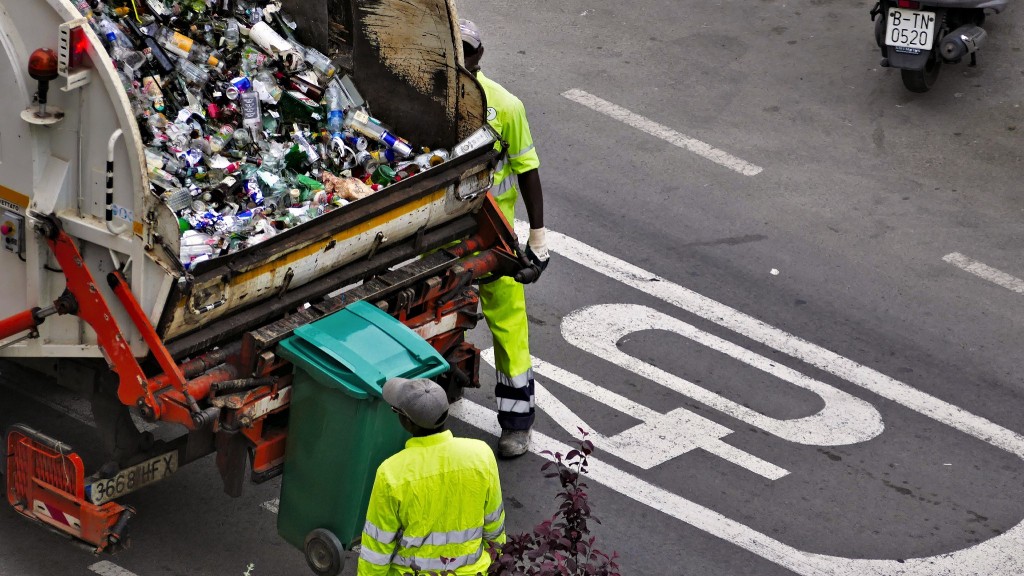New U.S. state ranking report shows Northeast is doing well on the recycling front while southern states lag behind

Eunomia has released a new research report titled The 50 States of Recycling: A State-by-State Assessment of Containers and Packaging Recycling Rates, offering the first state-by-state comparison of recycling rates for the most commonly used containers and packaging materials throughout the United States.
Notable findings include:
- Not all recycling is created equal, and we should prioritize recycling of materials that have the greatest potential to reduce greenhouse gas (GHG) emissions and the highest value for creating new products.
- Collection and recycling are not synonymous, as the quantity of material collected for recycling today is often far greater than what is actually processed and recycled into new products with non-recyclable contaminants making the entire system less effective.
- Recycling policies, such as a Deposit Return System (DRS), or "bottle bill," and investment in infrastructure, such as curbside collection, are crucial to effective recycling systems.
- Overall, the states that have more comprehensive and current recycling data along with a state-driven reporting system achieve higher recycling rates, demonstrating the importance of accurate measurement in moving the U.S. towards a more circular economy.
The first-of-its-kind report is intended to set a baseline in each state that can be leveraged to inform policy, design programs and assess infrastructure proposals and improvements. Using 2018 data sourced from the EPA, states, counties, municipalities, sorting facilities and material processors, the study looked at plastic bottles and trays, glass bottles and jars, aluminum cans, steel cans and cardboard and boxboard. This study takes a bottom-up approach to estimating recycling rates, analyzing what is found in the waste stream based on published state and municipality data to estimate generation and recycling.
Importantly, the report focuses on recycling rates based on the actual material reprocessed or "upcycled" into new products, rather than the collection rate, the more commonly used standard of measurement. By taking actual material reprocessed into new products as the point of measurement, the recycling rate is more representative of a material's true circularity and accounts for material losses at the sorting and processing stage.
The study found the 10 states with the highest recycling rate for common containers and packaging materials (CCPM) excluding cardboard and boxboard in 2018 are:
- Maine (72%)
- Vermont (62%)
- Massachusetts (55%)
- Oregon (55%)
- Connecticut (52%)
- New York (51%)
- Minnesota (49%)
- Michigan (48%)
- New Jersey (46%)
- Iowa (44%)
The 10 states with the lowest recycling rate for CCPM (excluding cardboard and boxboard) in 2018 are:
- New Mexico (13%)
- Texas (13%)
- Alabama (11%)
- Oklahoma (10%)
- Mississippi (8%)
- South Carolina (8%)
- Tennessee (7%)
- Alaska (6%)
- Louisiana (4%)
- West Virginia (2%).
Among the other highlights in the report:
- Low-value cardboard and boxboard makes up 73% of the recycling waste stream.
- Recycling one ton of aluminum has 3x the GHG reduction benefit compared to recycling one ton of cardboard.
- More effective waste management policies could reduce global CO2 emissions by up to 5% - the equivalent of grounding all commercial flights globally and taking 65% of cars off the road for a year.
- 9 of the top 10 states with the highest recycling rates for PET bottles and aluminum cans are states with a DRS and curbside recycling infrastructure.
- 3.5x more PET and 3x more aluminum is recycled in DRS states than in non-DRS states.
- Only 32% of non-bottle PET (such as clamshells) collected is estimated to be recycled across the 50 U.S. states.
"Understanding the current state of our recycling system is crucial to designing policies, infrastructure and products that support true circularity in our communities," said Keefe Harrison, CEO of The Recycling Partnership. "This report demonstrates that no one thing will heal recycling's challenge alone. The key is addressing the system holistically to drive real and meaningful change."


